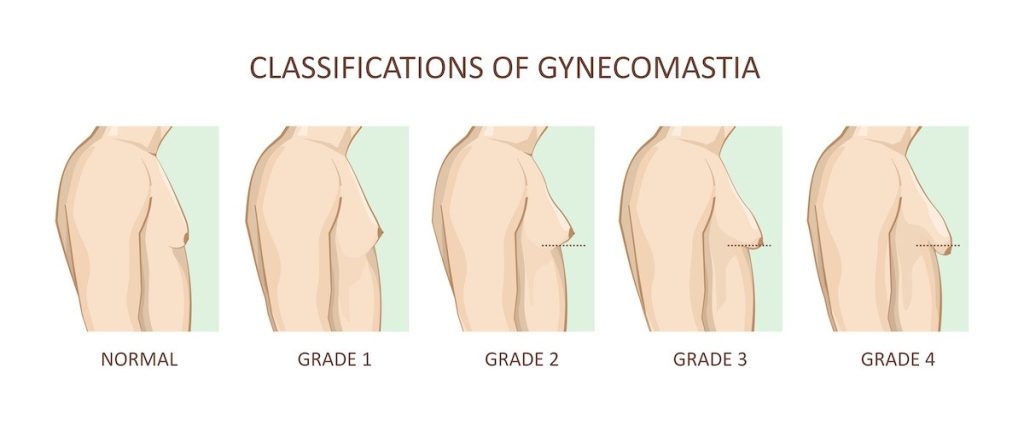Ever felt like you’re in a maze, seeking answers but only finding more questions? Especially when figuring out if gynecomastia surgery is covered by insurance.
The confusion can feel like trying to untangle a ball of yarn with no end.
This path may appear intimidating initially. But don’t worry! We’ll navigate through this together just as every labyrinth has an exit.
We’ll uncover what gynecomastia surgery entails and how insurance plays its part. We’ll delve into the costs involved and even explore alternatives for those who might not qualify for coverage or cannot afford the procedure.
Your takeaway? A clear path towards better understanding your options so you can make informed decisions about your health care needs.
Table of Contents:
- Understanding Gynecomastia Surgery
- Insurance Coverage for Gynecomastia Surgery
- Costs of Gynecomastia Surgery
- Qualifying for Insurance Coverage
- Preparing for Gynecomastia Surgery
- Post-Surgery Care and Recovery
- Alternatives to Gynecomastia Surgery
- FAQs in Relation to Is Gynecomastia Surgery Covered by Insurance
- Conclusion
Understanding Gynecomastia Surgery
Gynecomastia surgery, also known as male breast reduction, is a procedure designed to treat enlarged breasts in men. This condition can result from various factors such as hormonal changes, obesity, or the use of certain drugs.
The surgical approach varies depending on whether excess glandular tissue or fat causes the enlargement. If it’s mainly due to fatty tissues, liposuction may be used. But if glandular breast tissue is the main culprit, then excision techniques are needed.
Liposuction for Gynecomastia
Liposuction involves making small incisions and using a thin tube to suck out unwanted fat cells. It’s less invasive and usually allows quicker recovery times than other methods.
This technique is particularly effective when gynecomastia is primarily caused by excessive fatty deposits rather than an overgrowth of breast tissue itself.
Excision Technique for Gynecomastia
In contrast with liposuction, excision techniques involve cutting out excess glandular tissue directly. These procedures are more complex but necessary when dealing with significant amounts of hard, fibrous breast material that cannot be removed through suction alone.
Sometimes, both techniques are used together if there’s a need to remove both extra fat and glandular tissues.
Beyond removing excess materials, these procedures can also help to improve chest contour and nipple placement for a more masculine appearance.
Recovery from Gynecomastia Surgery
The recovery process after gynecomastia surgery usually involves wearing a compression garment to minimize swelling. Pain is typically minimal and easily managed with prescribed medication.
You may need to take it easy for several days post-surgery but should be able to return to work within a week or so.
Steering clear of tough workouts can boost your healing.
Insurance Coverage for Gynecomastia Surgery
Regarding gynecomastia surgery, one of the first questions that might pop into your mind is, “Will my insurance cover this?” The answer isn’t as straightforward as you’d like. It depends on several factors.
The coverage of gynecomastia surgery by your insurance plan can vary greatly and is an important factor to consider. For instance, some plans may view the procedure as cosmetic and won’t cover the cost. But don’t let this deter you because other policies see it differently.
If your insurer categorizes gynecomastia surgery under ‘reconstructive’ instead of ‘cosmetic’, then there’s a chance they’ll help out with costs. You can check out HealthCare.gov’s definition of reconstructive surgery to understand more about these categories.
Digging Deeper: Medical Necessity Criteria
In many cases, insurers use ‘medical necessity criteria.’ If your doctor can prove that the procedure is medically necessary – say due to physical discomfort or psychological distress caused by enlarged male breasts – there’s hope for coverage yet.
The process usually involves detailed medical documentation from your healthcare provider supporting why you need this treatment option over others available. It’s like arguing in court; solid evidence increases the chances for a successful outcome.
Navigating Through Insurance Policies
A little research goes a long way when dealing with health insurance companies. Before starting anything else, check their policy document by checking what exactly does and doesn’t get covered. HealthCare.gov has some helpful tips on appealing coverage decisions if needed.
You may also want to get preauthorization for the procedure from your insurer, which means they give a thumbs-up before you undergo surgery. This can save you from unexpected costs down the line.
Navigating health insurance can feel like a tricky maze, but remember – help is available. Don’t be shy to ask.
Costs of Gynecomastia Surgery
The costs associated with gynecomastia surgery can be quite varied. It depends on factors like your surgeon’s expertise, the complexity of the procedure, and where you live.
On average, the cost of gynecomastia surgery may range from around $4K to about 12K depending on the grade, 1-4. But remember – these figures are only estimates. Your specific situation could make that number go up or down.

Surgery Fees
Your biggest expense is likely going to be the surgeon’s fee. The surgeon’s fee may range from $3,500 to $7,000 depending on their qualifications and standing in the field.
You must also consider additional charges, such as anesthesia and operating room fees, which can vary greatly depending on the location.
Hospital Stay Costs
If your surgery requires an overnight stay at a hospital or care facility for post–surgery observation, they typically cost around thousand dollars per night.
Aesthetic Consultation Fees
Many patients seeking gynecomastia treatment will have consultations with cosmetic or plastic surgeons specializing in aesthetic treatments. These initial consultations generally run between $250 to $500.
Medication Costs
There’s bound to be discomfort after surgery, so prescription medication adds expenses too. Depending on what type of meds your doctor prescribes, these could add to the final tally.
Remember: Every person’s body is different, so costs may vary based on individual circumstances, but having a rough idea beforehand can help when budgeting for this life-changing operation.
Qualifying for Insurance Coverage
The question of whether gynecomastia surgery is covered by insurance can be a bit tricky. It all boils down to your specific policy and the procedure’s medical necessity.
Insurance Policies Vary
No two insurance policies are identical, so you must check yours out. Some insurers might cover gynecomastia surgery if deemed medically necessary, but others may not. Don’t hesitate to ask questions; let your insurer know what you’re planning and ask them directly about coverage.
Determining Medical Necessity
The term ‘medical necessity’ often pops up when discussing insurance coverage. In brief, medical necessity implies that a treatment or procedure is necessary to identify or treat an ailment. Learn more about medical necessity here.
If we put this into context with gynecomastia, factors like persistent pain, tenderness, and suspicion of malignancy could qualify as medically necessary reasons for surgery.
Your Doctor’s Role
Your doctor is essential in getting insurance coverage because they must provide documentation stating why this operation is required. The process usually involves presenting evidence like photos and describing symptoms that support its medical need.
Gather Your Facts First
- Talk openly with your surgeon – Discuss costs upfront so there won’t be any nasty surprises later on.
- Contact your health insurer – Get clear information on what’s covered under ‘gynecomastia surgery’. If they require pre-authorization before surgery, ensure you get that.
- Prepare your case – If the insurance company denies coverage initially, don’t lose heart. You can appeal their decision. Ensure you have all necessary medical documentation to back up your claim.
Getting your gynecomastia surgery covered by insurance might feel like a tough journey, but don’t forget being well-informed gives you strength. The better prepared and knowledgeable you are, the more likely you will succeed in getting insurance coverage.
Preparing for Gynecomastia Surgery
Your journey to a more confident you starts with proper preparation. Let’s explore the steps involved in preparing for gynecomastia surgery.
The Pre-Op Appointment
A key step is your pre-op appointment, where your surgeon will review your medical history and current health status. This visit helps determine if you’re physically ready for the procedure.
During this time, it’s essential to be honest about medications or supplements because some can interfere with anesthesia or recovery. Your surgeon may ask that you stop certain ones before surgery.
Necessary Tests
To make sure there are no hidden issues, pre-operative tests are crucial. You might need blood work or imaging studies like an MRI scan. These help confirm the diagnosis of gynecomastia and rule out other causes, such as tumors.
Lifestyle Changes Before Surgery
Making lifestyle changes can significantly impact how well you recover from surgery. For instance, smokers should quit at least two weeks before the operation since smoking can delay healing processes and increase complications risk.
In addition, adopting a healthy diet full of fruits and vegetables will boost immunity and promote quicker recovery post-surgery.
Scheduling Time Off Work/School
You’ll also need to plan some downtime after surgery—typically around one week—for rest and recovery, so schedule accordingly. It’s important not just physically but mentally, too: giving yourself space to heal without pressure is invaluable on your road back toward confidence.
Post-Surgery Care and Recovery
Your journey with gynecomastia doesn’t end once you leave the operating room. There’s a whole new phase to navigate – post-surgery care and recovery.
The First Few Days Post-Op
For starters, you’ll need rest. It sounds simple, but your body needs to heal properly. You might feel discomfort in the first few days after surgery; that’s normal as your body adjusts.
You’ll also have bandages or compression garments around your chest area to minimize swelling and support healing. Don’t worry about removing them yourself – your doctor will guide you.
Follow-Up Visits are Key
Schedule regular follow-up visits with your surgeon to monitor progress because these check-ups can catch any potential issues early on. Monitoring progress is essential to ensure any complications, such as infections or scarring, are addressed promptly.
Lifestyle Changes: Your Role in Healing
Moving forward, making certain lifestyle changes can greatly influence how well you recover from gynecomastia surgery:
- Diet: A balanced diet high in protein helps speed up wound healing.
- Habits: Quit smoking if you do so. Nicotine slows down healing by constricting blood vessels.
- Movement: Gentle exercise like walking aids circulation without straining incision sites too soon after surgery.
Studies show that following these guidelines can significantly improve your recovery process.
The Long-Term Recovery
In the long term, maintaining a stable weight is crucial to preserve the results of gynecomastia surgery. Rapid weight gain could potentially stimulate breast tissue growth.
Your physician will furnish you with comprehensive directions.
Alternatives to Gynecomastia Surgery
If gynecomastia surgery isn’t an option, don’t lose hope. Some alternatives can help reduce the appearance of enlarged breasts in men.
Lifestyle Changes
Making changes to your lifestyle could be a first step towards managing gynecomastia. This might involve adopting a balanced diet and regular exercise routine, which can help shed excess fat and improve overall body shape.
However, this approach may not work if the enlargement is due to glandular tissue growth. It’s important to consult with healthcare professionals before starting any new fitness or diet regimen.
Hormone Therapy
For cases of gynecomastia, an alternative treatment option may be hormone therapy to reduce estrogen levels or increase testosterone levels. The aim here is to reduce estrogen levels or increase testosterone levels in your body.
This approach needs close monitoring because altering hormone balance has potential side effects. So always make sure you discuss this option thoroughly with your doctor.
GyneFix – A Non-Surgical Option
A non-surgical procedure known as GyneFix offers another route worth considering for those unable to undergo surgery or afford its cost. Using radiofrequency technology it reduces breast size without leaving scars behind.
The treatment session lasts about one hour and patients typically resume their daily activities immediately afterwards – making it quite convenient compared to surgical procedures.
Medication
Certain medications can also help reduce breast size. Drugs like tamoxifen and raloxifene, usually used to treat breast cancer, have shown promise in treating gynecomastia.
Remember, though, these aren’t FDA-approved for this use yet and come with their own potential side effects.
In conclusion, it’s crucial to remember that while alternatives exist, none are as effective as surgery. Consultation with a healthcare professional is vital before choosing an alternative treatment.
FAQs About Is Gynecomastia Surgery Covered by Insurance
Why is gynecomastia not covered by insurance?
Gynecomastia surgery often isn’t covered because insurers see it as cosmetic, not medically necessary. But coverage varies by policy.
Can gynecomastia be medically necessary?
Yes, if gynecomastia causes significant physical discomfort or emotional distress, a doctor might deem the surgery medically necessary.
How you afford gyno surgery?
You can explore payment plans with your surgeon’s office or consider medical loans and healthcare credit cards to help manage costs.
Is gyno surgery worth it?
The value of the procedure depends on individual circumstances. It can significantly improve self-esteem and comfort for those affected by severe symptoms.
Conclusion
- It’s a lot to unpack. Navigating the maze of whether gynecomastia surgery is covered by insurance. But now you’ve got some clear answers.
- You know about the procedure and its benefits. You understand that coverage depends on your insurer and policy details.
- You know the expenses associated with this operation, which can range extensively depending on numerous elements. And you have an idea about how to qualify for insurance coverage.
- Preparation is key, so we talked about pre-operative tests and consultations, too. Post-surgery care was also addressed because it’s crucial for optimal results.
There are alternatives available. Knowledge is power! See our expert doctors at Gynecomastia LA for your evaluation.

Dr.Babak Moeinolmolki
LA Cosmetic Surgeon Dr. Moein is board-certified by the American Board of General Surgery.
